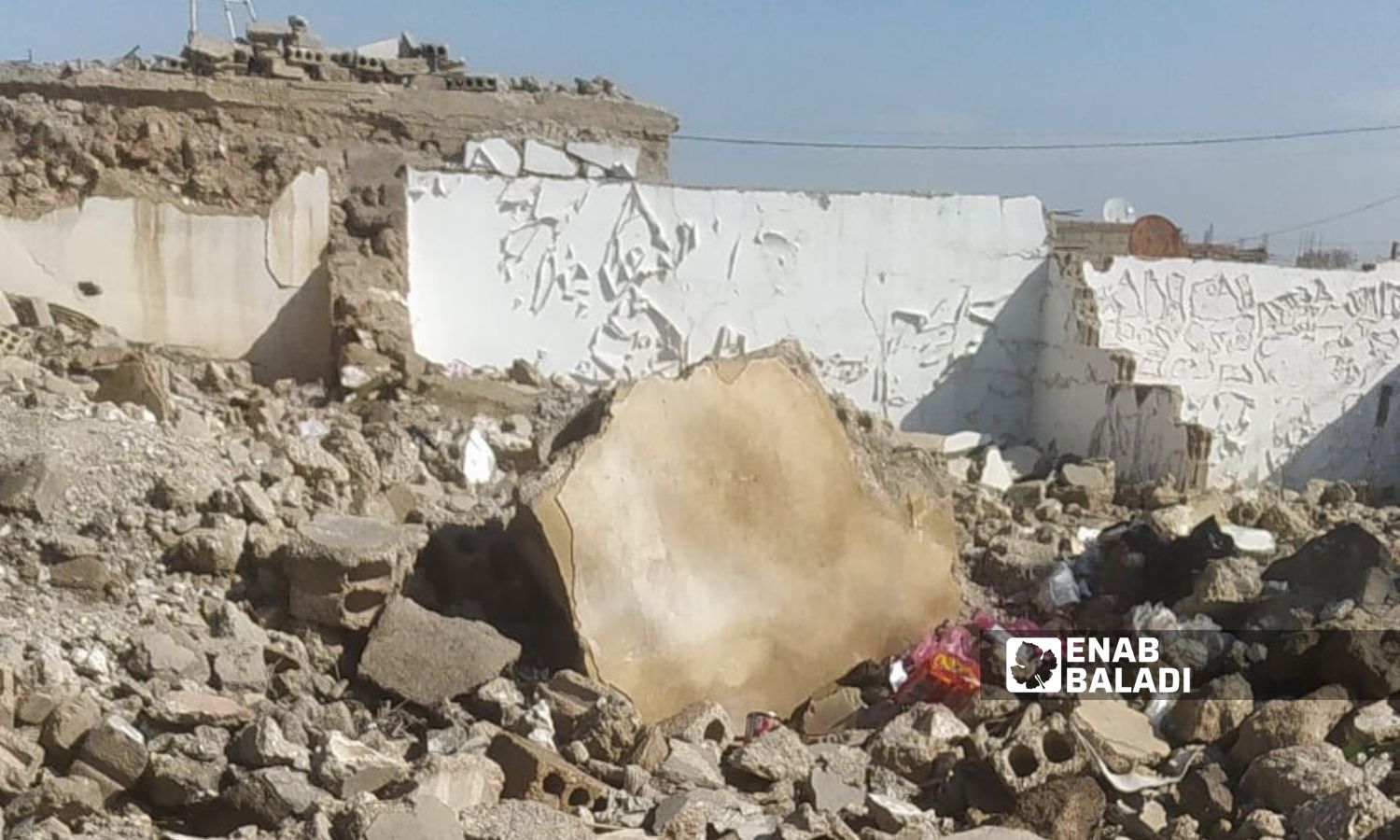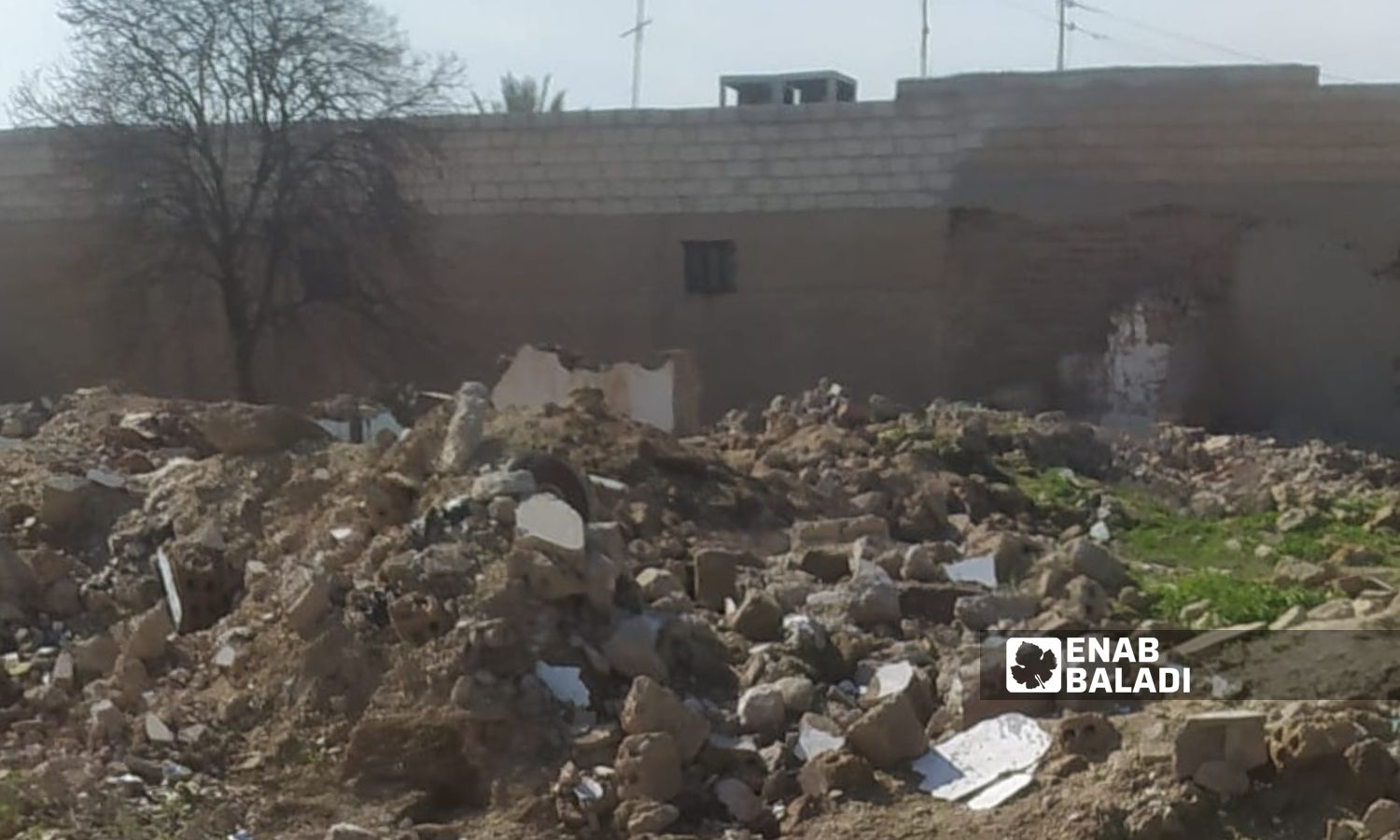



More than two years ago, the city of al-Hasakah witnessed a wide-scale attack by the Islamic State organization on the al-Sinaa prison in the Ghweran neighborhood, north of the city, aiming to liberate as many of the organization’s incarcerated members as possible. This resulted in fierce battles that lasted for days and caused damage to civilians’ properties in the area.
The attack, which took place on January 19, 2021, saw cells from the Islamic State organization manage to enter the prison, kill the guards, and fortify themselves inside with the prisoners. The battles between elements of the organization and the Syrian Democratic Forces (SDF), backed by the US-led International Coalition, lasted for about a month and ended mysteriously.
Following the confrontations, which involved American helicopter operations, security operations did not cease, as the SDF resorted to destroying houses that had been fortified by cells of the Islamic State organization, while other homes were damaged due to the military confrontations.
Today, more than two years after the end of these confrontations, the residents of the neighborhood are still waiting for compensation promised to them by the Autonomous Administration of North and East Syria (the political umbrella for the SDF) but have not received any of them.
Shadi al-Abdullah, 31, a resident of al-Hasakah, told Enab Baladi that he was displaced from his home in the Ghweran neighborhood as the armed confrontations intensified in January 2021, and he sought refuge with his family in a relative’s house in a neighborhood far from the conflict zone.
A week after displacement, al-Abdullah returned to his home to retrieve some essentials for his family, only to find a pile of rubble instead of the four-room house, without knowing the method by which his house was destroyed.
After the end of the confrontations and security operations in the area, committees affiliated with the Autonomous Administration visited the neighborhood, recorded his father’s name after proving ownership of the destroyed house, and received promises of compensation for the damage done to his home, yet he received no compensation, according to what he told Enab Baladi.
Al-Abdullah added that his family received only two food baskets, without any financial compensation, and with more than two years passing since the event, al-Abdullah’s family has not seen any progress in fulfilling the promise of compensation for the damage to the home.
Sa’ida Abdul-Hamid has a similar story, as her home was located in the street adjacent to the Faculty of Economics in al-Hasakah, consisting of two rooms and a small courtyard, but it was destroyed during the military confrontations that took place in the region in January 2021.
Abdul-Hamid told Enab Baladi that when the clashes happened, she did not know what to do, so she quickly gathered some clothes for her and her children and moved to her family’s house in a village near al-Hasakah. After ten days, she returned with her brother to check on her house and discovered that it was demolished by the SDF on the pretext of tunnels underneath it.
Despite her repeated attempts to obtain compensation through the local committees set up by the Autonomous Administration, she received no response or financial support, forcing her to live in a rented house on the edge of the city, at a monthly cost of 40 USD, despite its poor condition.
To secure the monthly rent, which she considered costly, Abdul-Hamid was forced to work long hours in the cleaning department of a hospital in the province.
Enab Baladi tried to contact officials in the Autonomous Administration to inquire about the reasons for not providing compensation to those affected and did not receive a response at the time of publishing this report.

Debris from houses destroyed by military operations in the Ghweran neighborhood during the Islamic State’s attack on the al-Sinaa prison – February 10, 2024 (Enab Baladi)
During the Islamic State attack, the attackers penetrated the neighborhoods of Ghweran, al-Nashwa, and al-Zuhour, in addition to the building of the Faculty of Economics adjacent to the prison.
According to the official narrative of the SDF, violent clashes erupted with members of the Islamic State organization who managed to enter the area, and the military operations continued for more than ten days.
The SDF eventually managed to repel the attack, as it announced on January 30, 2022, that it had successfully thwarted the attack, noting that the battles resulted in the death of 374 elements of the organization, and 121 SDF fighters and workers in the prison, plus four civilian casualties.
The Islamic State organization claimed on its part that it succeeded in freeing more than 800 of its detained members from the al-Sinaa prison, in stages, after three days from the beginning of the military operations, as reported by Amaq news agency associated with the organization at the time.
The al-Sinaa prison, also known as “Ghweran” prison, is located on the outskirts of the Ghweran neighborhood at the southern entrance of al-Hasakah city. It is one of a group of prisons where the SDF detains thousands of Islamic State affiliates, including approximately 4,000 foreigners from about 50 countries.
if you think the article contain wrong information or you have additional details Send Correction